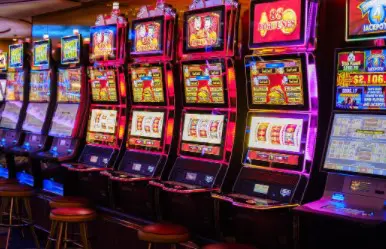Fruit machines, also known as slot machines in England, are a famous invention that has been around for more than 100 years. Because of their thrill to players, slot machines are a popular choice. There is always a chance to win the life-changing jackpot with each pull. Charles Fey, a German immigrant and mechanic who lived in San Francisco in 1899, invented the first slot machine. Online and land-based casino slot machines have descended from the original Liberty Bell machine.
Three spinning reels made up the Liberty Bell slot machine. Each spin featured the symbols of a Liberty Bell, including the images of a broken Liberty Bell and the spade, heart, and diamond symbols. The biggest payout was a spin that produced three Liberty Bells consecutively. This paid out a total of fifty cents or ten pennies. In those days, it was simple to calculate odds. There were only three reels and ten possible stops. This gives you the following odds: 10X10X10 = 1000 combinations. Only one of these combinations resulted in the big jackpot.
Slot machines were outlawed in many states in 1902. Charles Fey had to think outside the box. Charles Fey changed the symbols of his devices and began offering gum, candy, and drinks as prizes. Owners of machines with already-outs redecorated them with images of gum and fruits instead of card suits. The ubiquitous cherry has remained on slot machines through the ages. The sticks of gum became the bars you see today on many standard devices.
In casinos, slot machines weren’t top-rated until the 1970s. Older devices had fewer stops and a lower chance of winning a jackpot.
Bally, a pinball machine manufacturer, created a new machine with electronic and mechanical parts. Newer engines allowed for larger bets and more enormous payoffs. This made machines more profitable.
In the 1980s, the random number generator was popularized, and everything changed. The random number generator simulates the spinning reels using a computer program. This revolutionized the face of casinos. Because the computer program powered them instead of a mechanism, the reels could have been larger than actual reels. Because the spin button activated the random numbers generator program, the spin arms were no longer necessary. The machines paid out a predetermined percentage.
Thanks to the new technology, machine manufacturers can now produce almost unlimited entertaining and attractive slot games. Nowadays, slot machines take up more than 80% of casinos’ floor space. This is eye candy at its best, and gamblers love it.
Slot machines, or the vibrant ‘fruit machines’ as affectionately termed in England, stand as timeless icons in the world of gambling, each one a beacon of tantalizing possibility and exhilarating chance. These fascinating devices have carved their niche into the gambling sphere for over a century, epitomizing the allure and thrill inherent to the domain. Each pull, a dance with fate, a flirtation with the prospect of transforming one’s world forever.
Charles Fey, a mechanic and German immigrant residing in 1899 San Francisco, crafted the first of these metallic marvels, the Liberty Bell. This invention marked the genesis of a journey, weaving through eras and technologies, culminating in the dazzling array of online and terrestrial casino slot offerings we witness today.
The Liberty Bell flaunted three spinning reels, each adorning symbols such as the Liberty Bell itself, the spade, heart, diamond, and a cracked Liberty Bell. A cascade of three Liberty Bells signaled the jackpot, a fortune of fifty cents or ten nickels at the time. Back then, the realm of possibilities was a simpler one, with just three reels and ten potential stops creating a canvas of 1000 combinations, but only one bore the fruit of grand fortune.
However, as laws tightened around these metallic entertainers in 1902, innovation and transformation became the harbinger of survival. Symbols morphed into illustrations of gum and fruit, and prizes transformed into candies, gums, and drinks, giving birth to the cherished cherry and bar symbols we see today.
Slot machines were mere background entities in casinos until the 1970s, but the advent of more advanced, electronic machines by pinball manufacturer Bally, paved the way for more substantial bets and rewards, skyrocketing their popularity and profitability.
The introduction of the Random Number Generator in the 1980s reshaped the landscape entirely, enabling the simulation of spinning reels via computer programs and expanding the possibilities beyond the limitations of physical mechanisms. This innovation meant larger reels, unnecessary spin arms, and predetermined payouts.
With the elevation in technology, manufacturers have now the freedom to craft myriad engaging and appealing slot games, occupying over 80% of the casino floor space today, a visual symphony and gambler’s delight.
In conclusion, these colorful guardians of fortune continue to evolve, blending complexity with simplicity, resonating with the diverse and intricate tapestry of human experience and imagination, keeping alive the legacy of Charles Fey in every spin and every twinkling light, whispering tales of what’s possible in every clang of the coin. They stand as living reminders of our journey through time and our unending quest for excitement and discovery.


